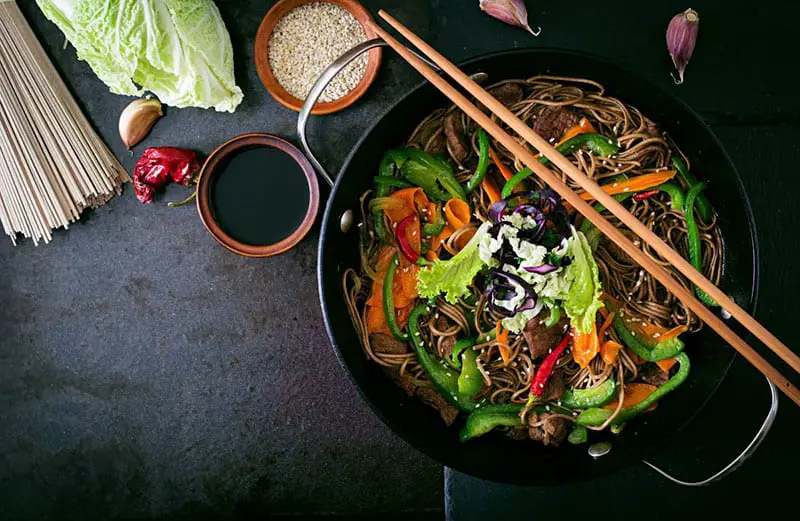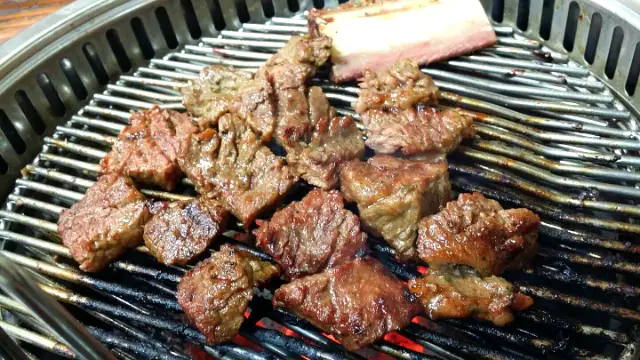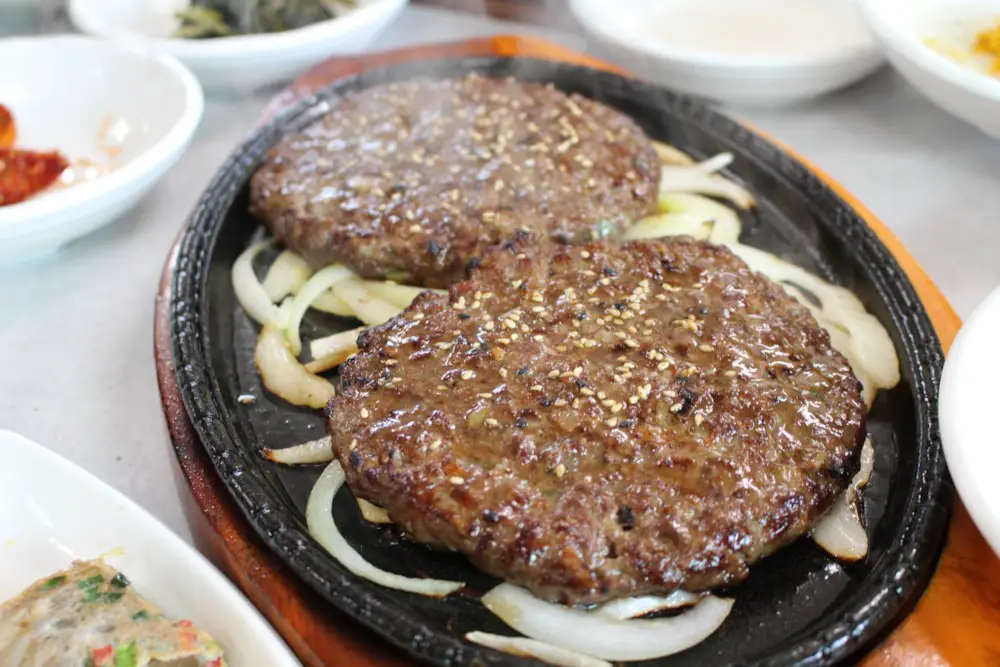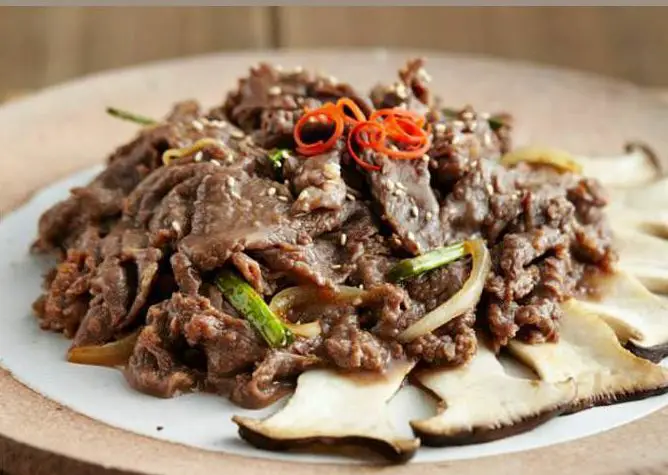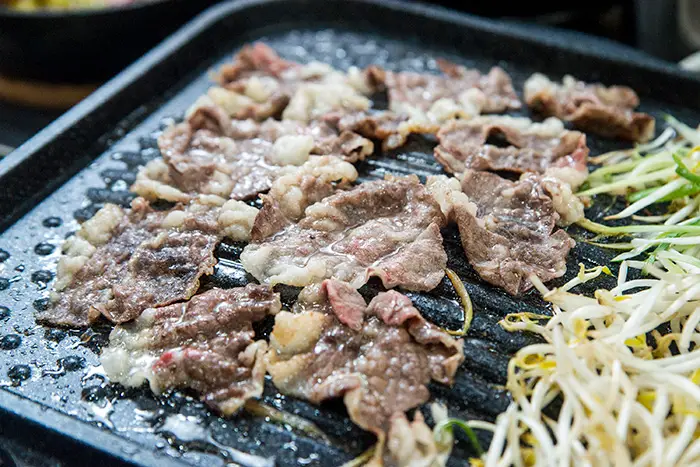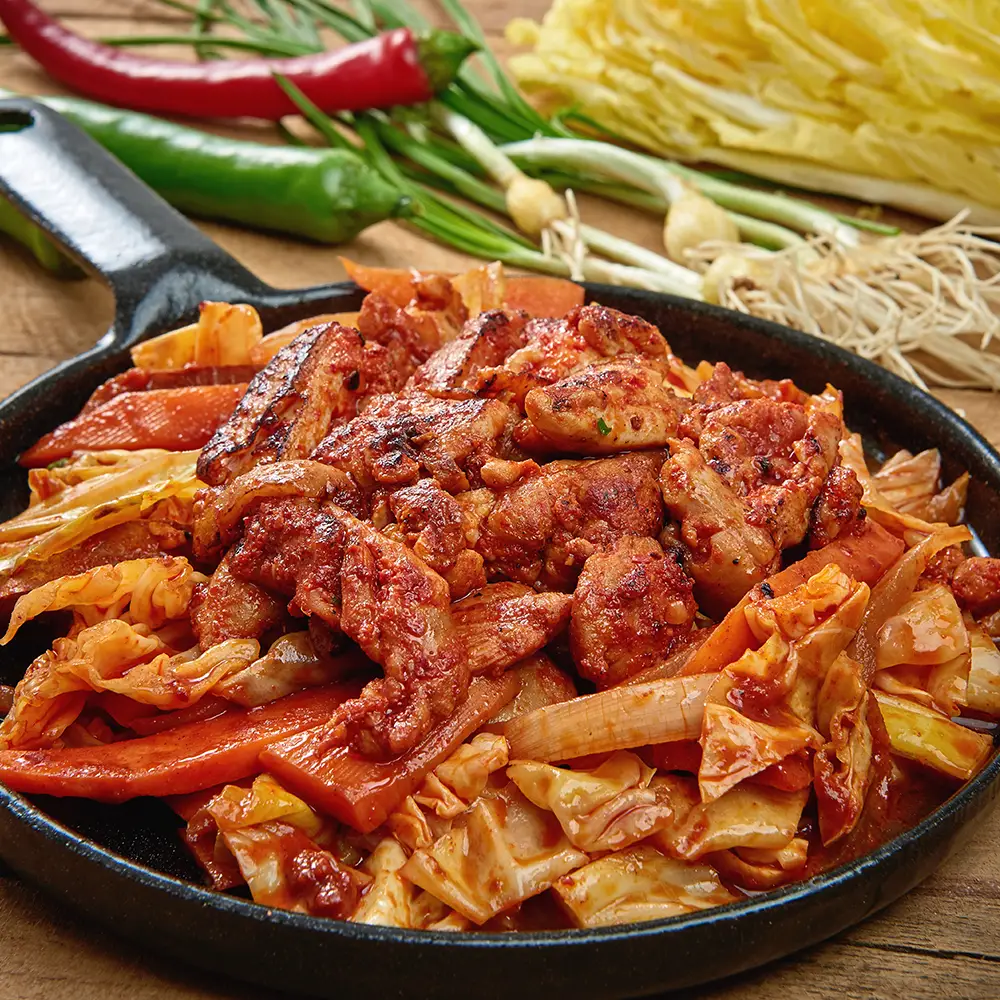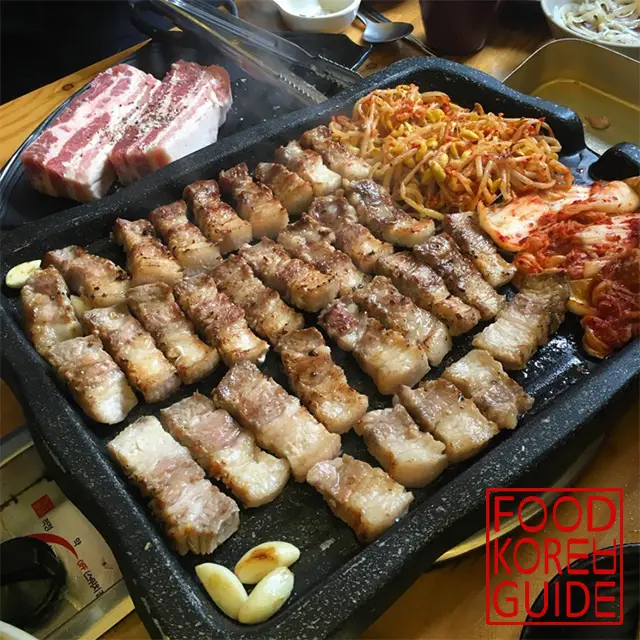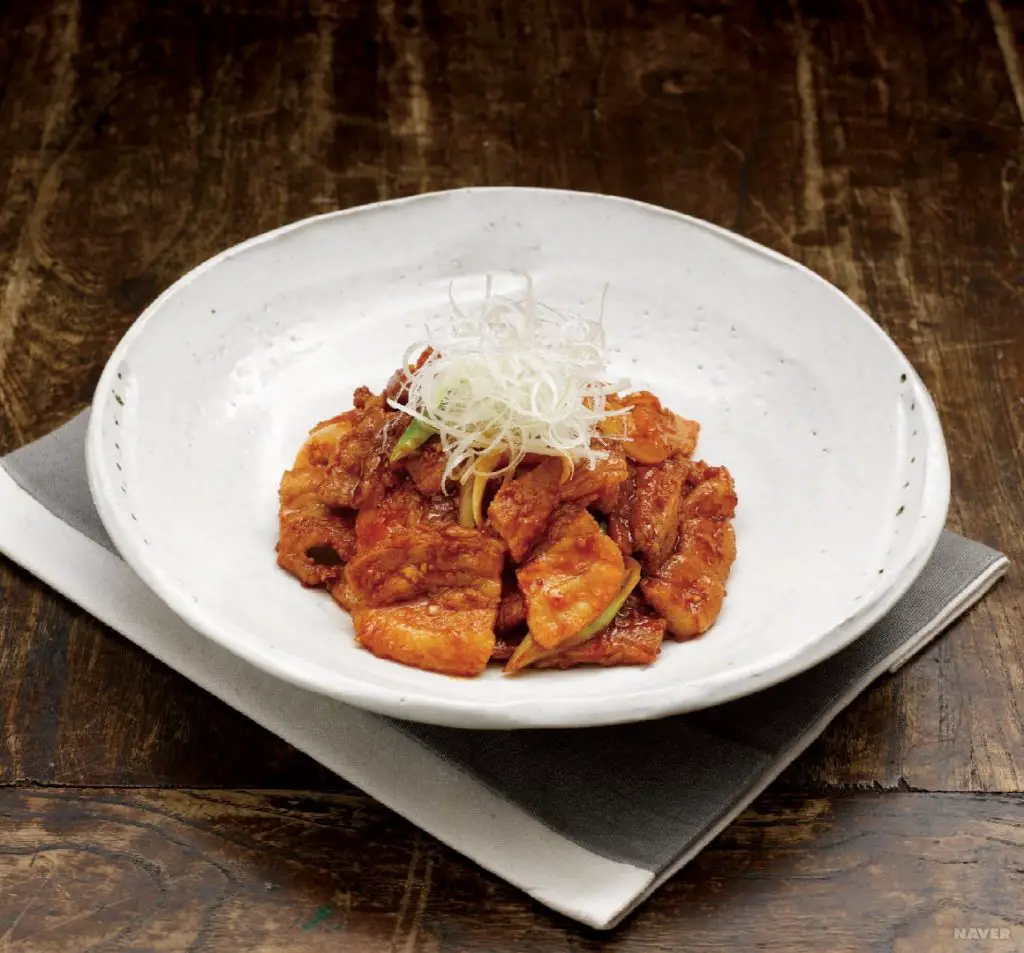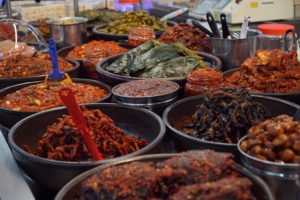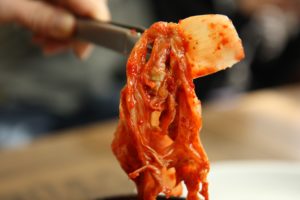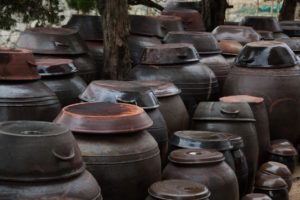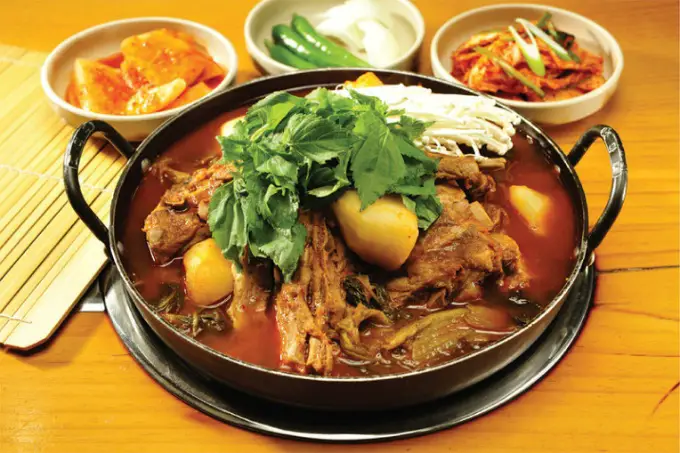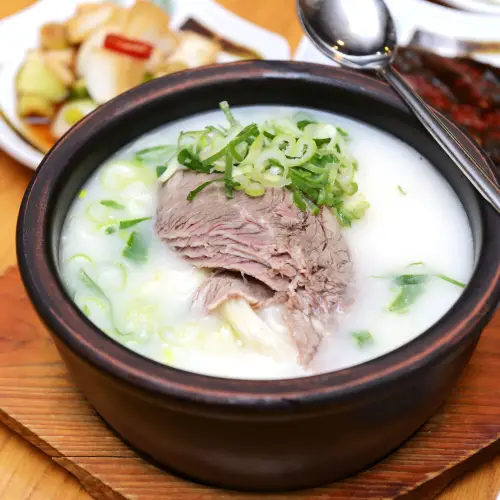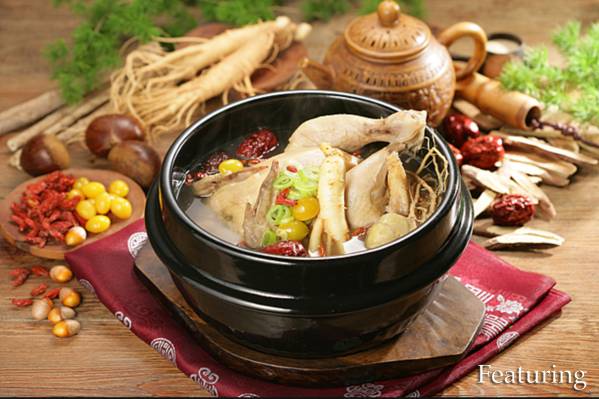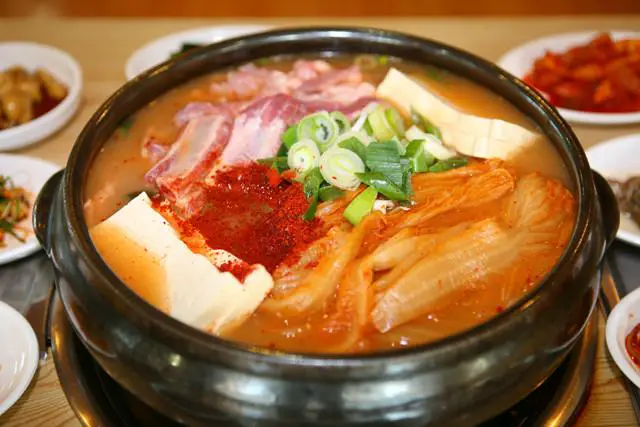You’re in Korea, now what to eat?
While fiery red-pepper plates, pickled vegetables, and meats are the most representative of Korean dishes, there’s a world of dishes that are less popular but no less good.
Meats – Beef
Galbi
mamasinfo.tistory.com
Beef galbi is one of the most well-known dishes in Korea. As with most origin stories, it’s unclear what’s true and what’s false, but we think that the best story behind this sweet and savory short rib dish was that it originated during the era of Mongol rule, when Korea was under the Goryeo dynasty.
As the story goes, the heavily carnivorous Mongolians packed light and traveled far, and had to make do with what they had: and while on the road, they didn’t necessarily have the space to bring separate cooking grills, so they used their shields instead. Now when you go to a Korean restaurant, pay attention to the barbeque grills – many of them do feature ornate designs and patterns, making you wonder…
Ddukgalbi
tong.visitkorea.or.kr
Ddukgalbi is made with beef minced, seasoned, and kneaded for a long time.
These are meat patties that originated several hundred years ago. Reportedly, it was originally a royal dish because it wasn’t proper for the king to eat meat directly off the bone.
Instead, you’ll see the meat is shaped into rice cake-like shapes. Some versions go a step further and actually mix in bits of dduk, or rice cake, befitting its name.
Galbijjim
www.naver.com
Braised short ribs. The marinade for this is important, and includes typical galbi spices and sauces: soy sauce, honey, pear, carrots, sesame oil, garlic. Simmer over heat for a few hours, and you get meat that falls tenderly off the bone.
Other common ingredients are carrots, chestnuts, ginkgo nuts, and typically reserved for special occasions.
Succulent and tender and a perfect topping over rice. Really, it just falls off the bone.
Bulgogi
www.hanyangmart.com
Another one of the more famous beef dishes, ‘fire meat’ is made by grilling marinated, tender slices of sirloin, tenderloin, or brisket.
Usually tossed with vegetables like carrots, onions, and spinach, it’s a perfect bodybuilder’s meal.
Said to have originated during the ancient kingdom of Goguryeo, approximately 2,000 years ago, the meat was originally basted with soy paste but now is usually marinated in soy sauce, pear juice, and garlic, and oil.
Bulgogi is either grilled above a fire, or simmered like a stew in its own marinade and juices.
Chadol
food.chosun.com
Thin sliced strips of beef brisket, preferably well-marbled.
Unlike other meats, chadol is not marinated and is dipped in salts, sauces, and wrapped in fresh vegetables and pickles. A healthy heap of chadol atop a grill is a sight that will warm the coldest of hearts.
Meats – Chicken
Korean Fried Chicken
uncleschicken.com
Someday in the far-off future, it’s possible that people will confuse the K of KFC to be ‘Korean’, rather than ‘Kentucky’.
Korean-style fried chicken is ubiquitous in Asia. Representative is the Kyochon chain, which has made a franchise and art form out of this, with soy, honey, and red pepper based flavors, and franchises in Southeast Asia and the United States.
The practice of frying chicken in Korea originated during the Japanese colonial era, with bemused mentions in English-Korean dictionaries of the time. The food became more popular during Korea’s post-war reconstruction period during the 1970s and 1980s, and fried chicken and beer became a legitimate food pairing.
Perhaps eyeing this trend, it was during this period that Kentucky Fried Chicken entered Asia, and first planted roots in Korea in 1984.
Dakgalbi
uncle-ray.com
Literally, Chicken Galbi.
This is chicken with a spicy twist, and is usually marinated in spicy paste and eaten with the same accoutrements as with other meats – leafy wraps, pickled sprouts and vegetables, rice.
Once you’ve finished the chicken, the leftover savory-spicy marinade makes for a great sauce base. As a post-meal finisher, most dakgalbi places will bring you eggs, strips of salted seaweed, and make you a great fried rice before your eyes.
Jjimddak
limfood.com
Chicken steamed with potatoes, vegetables, tossed with vermicelli noodles, spring onion, garlic, ginger, and of course – red peppers.
All marinated in a soy-based sauce, this hot, spicy dish is a perfect topping when eaten with rice and is a highly communal platter: make sure you visit with friends or family to eat it all.
Said to have originated in the town of Andong, in North Gyeongsang Province.
Meats – Pork
This section is decidedly non-halal.
Pork, not beef, nor chicken, is the main event in terms of meat in Korea. More pork is consumed in Korea than beef and chicken combined, at 24 kg per person/year total. Make sure when ordering the ‘galbi’ in Korea, that you figure out what meat it is exactly – because most of the time it’s pork, not beef.
Samgyeupsal
Samgyeupsal is basically like bacon, but cut into thicker strips and grilled with a sprinkling of salt and pepper.
Besides the high concentrations of fat (which is good for you, by the way – see #8), the other characteristic of these juicy, tender strips of pork is that they are unseasoned and easy to prepare and make, and can be grilled on any kind of surface.
Like everything else, the origin of samgyeupsal is widely debated. There are stories of widespread pork consumption in Korea during the Goguryeo dynasty, although this type of pork was marinated and seasoned – unlike samgyeopsal. And up until the Joseon dynasty period, all meats were boiled, steamed, or prepared in stews or dumplings, rather than grilled.
Whatever its real origins, samgyeupsal has only become widely consumed during the past few decades. In the post-Korean War era, Korea began exporting tons (literally) of meat to Japan, especially pork. With the loin cuts (tenderloin, sirloin) highly favored for tonkatsu dishes, high-fat samgyeupsal cuts were effectively less/not exportable, and were left behind in Korea.
At the same time, Korea was becoming more economically developed, with increasing installation of gas ranges and stoves in apartments, and enterprising entrepreneurs started rumors that in order to clear your throat passages of dust and other contaminants, you should eat a lot of oily foods 🙂
Through the confluence of these events, samgyeopsal has become Korea’s king of meats.
Jeyuk Bokkeum
www.naver.com
Basted in gochujang (red pepper paste) and roasted, the pepper paste breaks down and tenderizes the pork, and eliminates any lingering odors.
Jeyuk bokkeum was originally made by basting pork in soy sauce, but red pepper paste became the favored marinade a few centuries ago, when red pepper was first introduced to Korea. Yes, we were also surprised to learn that spicy dishes were not native here.
Bossam
mrbossam.co.kr
Pork belly boiled with spices, and eaten with a variety of wraps, such as Napa cabbage and pickled vegetables.
A carb-light, incredibly fulfilling meal nevertheless. Wraps, plus pickled and fermented vegetables are commonly eaten as sweet and sour complements to the salty and savory meats in Korean cuisine.
Daejigalbi
blog.daum.net/choch1004
Pork rib meat, but without the fatty slabs of samgyeupsal.
Because of samgyeupsal’s popularity, though, the fevered competition for tasty bits of rib meat has led to a lot of pork ‘galbi’ actually being cuts of neck and thigh.
Pickled Vegetables
You have a plate of meat. Now what do you eat it with?
Great for wrapping your meats, or eating on their own with a bowl of rice, pickled and fermented vegetables are perhaps the most representative dishes of Korean cuisine.
Jangachi
Jangachi are picked vegetables, although not fermented. The most representative of these are perhaps ggaetnip, or sesame leaves pickled in a brine made up variously of soy sauce, salt, sugar/honey, red pepper flakes.
Other famous variations are pickled garlic cloves and radishes. Any vegetable will do, and most barbeque places will offer a plethora of pickled vegetables as wraps – the slightly salty and sour taste complementing the salty umami quite well.
Kimchi
Pickled, usually fermented vegetables, and most typically made with Napa cabbage and radishes.
Kimchi is a Korean staple, but the version that most people are familiar with – the deep red, spicy variety – was actually not known until the early 1600s, when red pepper was first introduced into Korea.
As Korea’s economic fortunes have fluctuated, so has the spiciness of kimchi: during the Korean War, ‘kimchi’ was pickled and not spicy at all, as the ability to purchase red pepper was a sign of high economic status. Right now, the pendulum has swung the other way, and the insane spiciness of some foods might be a representation of Korea’s economic development.
The earliest records of fermented and pickled vegetables in Korea appear in the Three Kingdoms period, nearly 2,000 years ago, and these versions are still with us today: in the form of white kimchi (baekgimchi). These were typically preserved only with salt, due to the rarity of other ingredients.
There are hundreds of varieties of jangachi and kimchi and we cannot cover them all here. Maybe fodder for a future post.
Stews
Korean tables are rarely presented without stews or soups of some kind.
Daenjangjjigae
This most representative of Korean stews is simply made by dissolving daenjang (soybean paste) in water, and adding ingredients such as various vegetables, red pepper paste, and other seasonings.
Soybean paste and soy sauce are among the two most essential ingredients in all of Korean cooking, and are made through the same process – fermenting soybeans. The soybeans themselves are used to make the paste, and in the fermentation process, soy sauce collects on the layer above the soybeans.
These two have a yin and yang quality to them: the longer the paste is fermented, the richer and better the soy sauce, but the earlier the paste is drawn, the better its taste.
Like most fermented foods, daenjang is an acquired taste, but if you’re making the trip to Korea, it’s a must-try.
Korean tables are rarely presented without some form of it present, in the form of a dip or seasoning to be eaten with vegetables and white rice, or as a stew. It has a recorded history as far back as the 7th century, when Chinese observers referred to the paste as ‘Koryo’ paste, differentiated from the meat- and fish-based pastes of Chinese cuisine at the time.
Haejangguk
‘Hangover stew’, literally. Many variations of this stew exist, but revolve around slightly spicy broth simmered with meat, garlic, and vegetables such as cabbage and sesame leaves. The stew is commonly eaten in the morning, to beat back the remnants of the liquor-fueled night before, or sometimes is consumed while actually drinking alcohol.
But, we don’t see any special occasion required to drink down these hearty, savory stew. Here are some of the major variations.
Gamjatang
http://www.ilbe.com/8938386241
A type of ‘hangover stew’ simmered with pork bones (spine), giving the broth a savory, deep flavor. ‘Gamja’ means potatoes, but you’ll see that sometimes gamjatang has no potatoes – so what gives?
Some argue that since potatoes were incredibly expensive in the past and could only be grown at certain times of the year, original ‘gamjatang’ in fact comes from ‘gamja’, another Korean word that refers to the chewy bits of pork stuck between the vertebrae of the spine.
A hearty comfort food.
Kongnamulguk
콩나물국. 이병학 기자
A variation of spicy stew, that is made with what appear like a bucket of bean sprouts (‘kongnamul’ means bean sprouts). Bean sprouts have been consistently eaten for centuries, if not millennia, in Korea, for their ease of cultivation and high nutritional value – full of folate, vitamin C, protein, and vitamin B, among other nutrients.
Seollungtang and Gomtang
menupan.com
These are beef bone broths, as compared to gamjatang, which is made with pork bones. These can be made with variations of oxtail, bones, leg bones, other beef parts stewed in water for half a day, lightly salted, and served with green onions and side dishes like kimchi.
Gomtang is a slightly oiler variation of seollungtang, as it’s made with inner cuts of meat. Bones are the main event in seollungtang, but take a backseat in gomtang.
According to legend, seolleungtang is derived from the place name Seollungdang, which literally means “advance farming hall”, and is where the Joseon dynasty emperor used to conduct agricultural and harvest rites.
After the ceremony, a bone broth would be served to those gathered. The broth took its name after the place, with the final character slowly changing from ‘dang’ to ‘tang’, which means stew.
Other scholars argue that the beef broth was inherited from the Mongols, who reintroduced beef consumption to the Buddhist (and vegetarian) Goryeo dynasty: Chinese writers described Mongol armies as having the practice of boiling entire cows and lambs in huge cauldrons, and referred to these cauldrons as kongtang (空汤); literally, empty/space soup.
The Mongol pronunciation of those characters is shuru, while the Korean pronunciation of the Chinese characters is kongtang (can you hear ‘gomtang’?). And as the story goes, the ‘shuru’ then went on to become shurutang, or later, evolved into ‘seollungtang’.
It’s worth contemplating while you drink down the broth.
Samgyetang
There are two stews that are traditionally eaten during the hottest days of midsummer.
This is from the Korean belief that trying to cool down by eating cold foods, unnecessarily lowers body temperatures and throws it off of balance.
Instead, ancient Korean thinking believes that one must fight heat with heat, and by eating foods that raise body temperature and cause the body to sweat, the body cools down naturally from the outside in, instead of inside out.
With all that said, the main ingredients of this stew are a whole chicken stuffed with ginseng, jujubes, and glutinous rice. The mixture forms a thick, milky broth that is noted for its medicinal and therapeutic properties.
The other main stew that was traditionally eaten during the ‘dog days’ of summer, is…
Yookgaejang
hongikfood.co.kr
The name for this is rougoutang (肉狗汤) in Chinese, which to Chinese readers will hint at its origins. This is a kimchi-based, spicy soup that used the long, chewy strips of dog meat. However, then as now, there were those who couldn’t stand the gamy aroma of dog meat – and so beef torn into long, thin strips, were used as a substitute.
The 1986 and 1988 Olympic Games brought international scrutiny to this kind of food – and dog meat-based variations took on different names and are now relegated to back alleys. Yookgaejang now is made with beef, not dog.
Sundubu
This is a tofu stew, made with tofu that has foregone the latter steps of draining, resulting in a tofu with a silky-fine texture. The key to making good sundubu, as we are told, is using the right brine to coagulate it, and boiling soymilk in the right type of water.
The tofu can be eaten in its own stew with broth and soy sauce, but is more commonly eaten in a spicy version with kimchi, as well as with seafood such as oysters and clams.
Kimchijjigae
www.hanyangmart.com
This is literally a kimchi stew: made by boiling water with slightly sour kimchi, garlic, oil, and usually simmered with pork. With such a simple ingredient lineup, the quality of the kimchi is everything for this stew. Other ingredients can include slices of tofu, green onions, or ramen noodles.
Budaejjigae
www.hanyangmart.com
This is literally, ‘barracks’ soup, and is made with preserved meats like spam, ham, and Vienna sausages. Why the curious name and ingredients?
Budaejjigae originated in the aftermath of the Korean War, when American GIs secretly sold the canned meats that were part of their rations, to enterprising restaurant owners. These black market meats were highly prized in a time when protein was rare, and became a comfort food in their own right.
Korea is still Hormel Corp’s (owner of Spam) second largest market.
